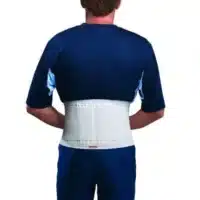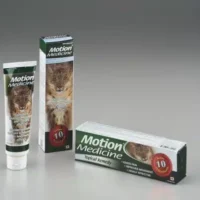-

In Stock
$67.42 – $108.58The Mueller Sports Medicine Adjustable Back Brace with Lumbar Pad features a removable lumbar pad for targeted lower back support, an internal molded plastic component to eliminate rolling or bunching and two outer elastic tension straps for adjustable support. You also benefit from additional back stability and support from the supporting springs positioned along your spinal column. This brace is a great treatment for lower back pain or for sprained, strained or aching backs.
-

Free Shipping To GTA
In Stock
$87.16The Mueller Sports Medicine Back Brace, White is a comfortable and lightweight solution to back sprains and strains, an arthritic back, moderate disc conditions, muscle spasms, sciatica, chronic unstable lumbar spine or for strains of sacroiliac area. Equipped with a 9 inch wide elastic band, a large foam pad and supportive steel springs. The pad conforms to your lower back area and supports your back in the most critical areas. There is also a second 6 inch wide outer elastic band to secure the pad and provide additional back support.
SIZING: (Measure around waist) SM 28 – 32″ (71 – 81 cm) MD 32 – 36″ (81 – 91 cm) LG 36 – 40″ (91 – 102 cm) XL 40 – 44″ (102 – 111 cm) XXL 44 – 48″ (111 – 122 cm)
-

$59.25The McDavid Back Stabilizer helps to protect you from back strains and pulls, courtesy of its 6 steel stays strategically positioned to give you maximum support. The brace’s vented elastic side panels also feature hook and loop closures for a custom fit and superior comfort.
-

Free Shipping To GTA
In Stock
$110.04The It’s You Babe Best Cradle maternity support is ideal for the mom having twins, triplets or quads and for the mom needing support early in pregnancy. Also an effective support for non-pregnant patients who have a pendulous abdomen. Open abdominal design is cool and comfortable.
-

Free Shipping To GTA
In Stock
$89.25The Mueller Green Back Brace helps protect against lower back pain, fatigue and weakness while providing optimal support. One size.
-

In Stock
$55.03The It’s You Babe Mini Cradle is a premium maternity belt to complement every expectant mom’s collection of maternity wear. It perfectly complements maternity fashions and discretely fits under most maternity clothes. The Mini Cradle is wearable throughout pregnancy and helps provide continuous pain relief.
-

In Stock
$29.60 – $98.65Motion Medicine helps to reduce pain and swelling from muscle soreness or injuries and also increases your range of motion.
-

$30.35 – $35.25The Relief Pak® HotSpot® Moist Heat Pack will give you the same moist heat therapy treatment as the Hydrocollator® HotPacs, only at a more economical price.
-

$22.22The McDavid Waist Trimmer cushions, compresses and supports your back and abdominal muscles to help relieve minor back pain, and may enhance weight loss efforts via therapeutic heat.









